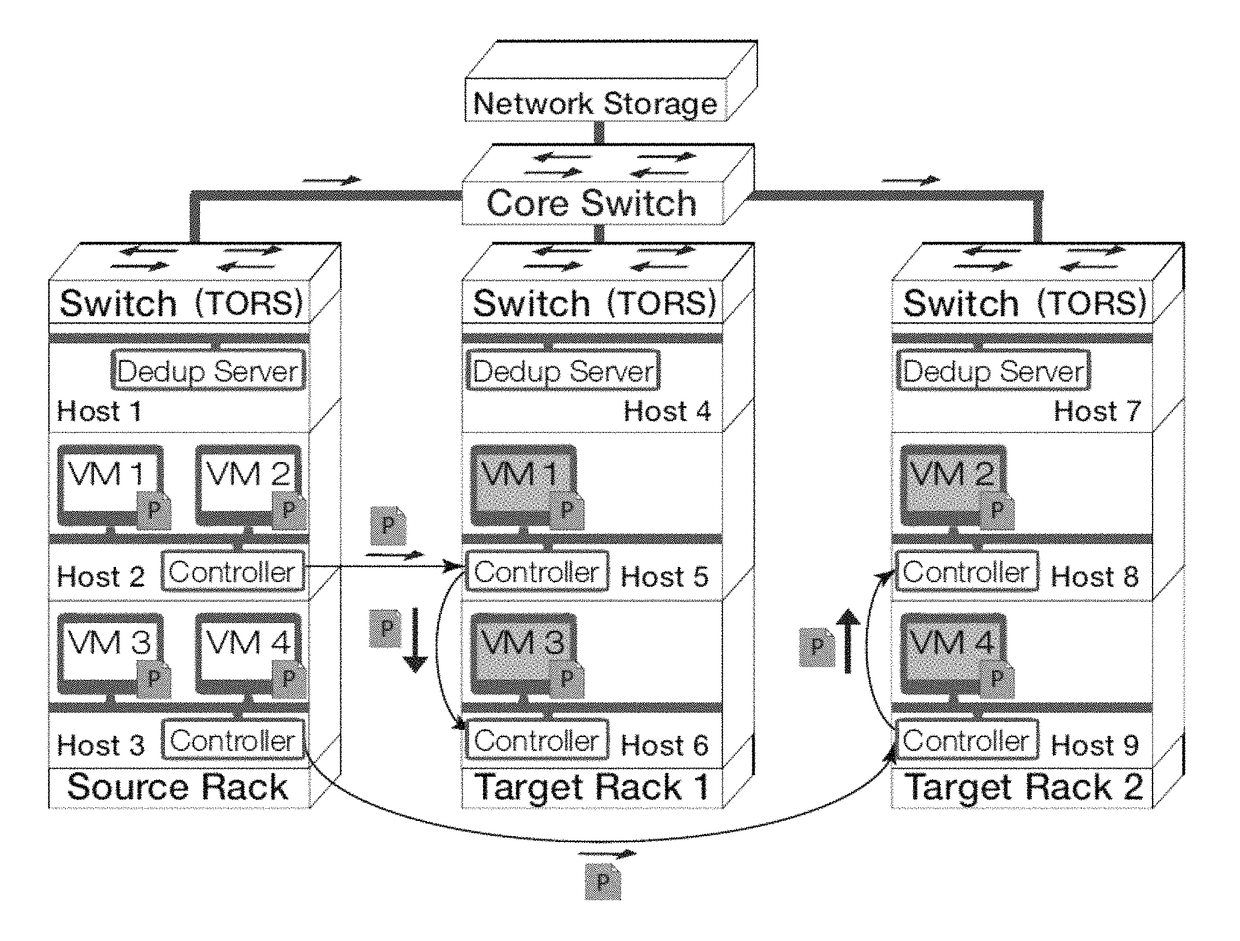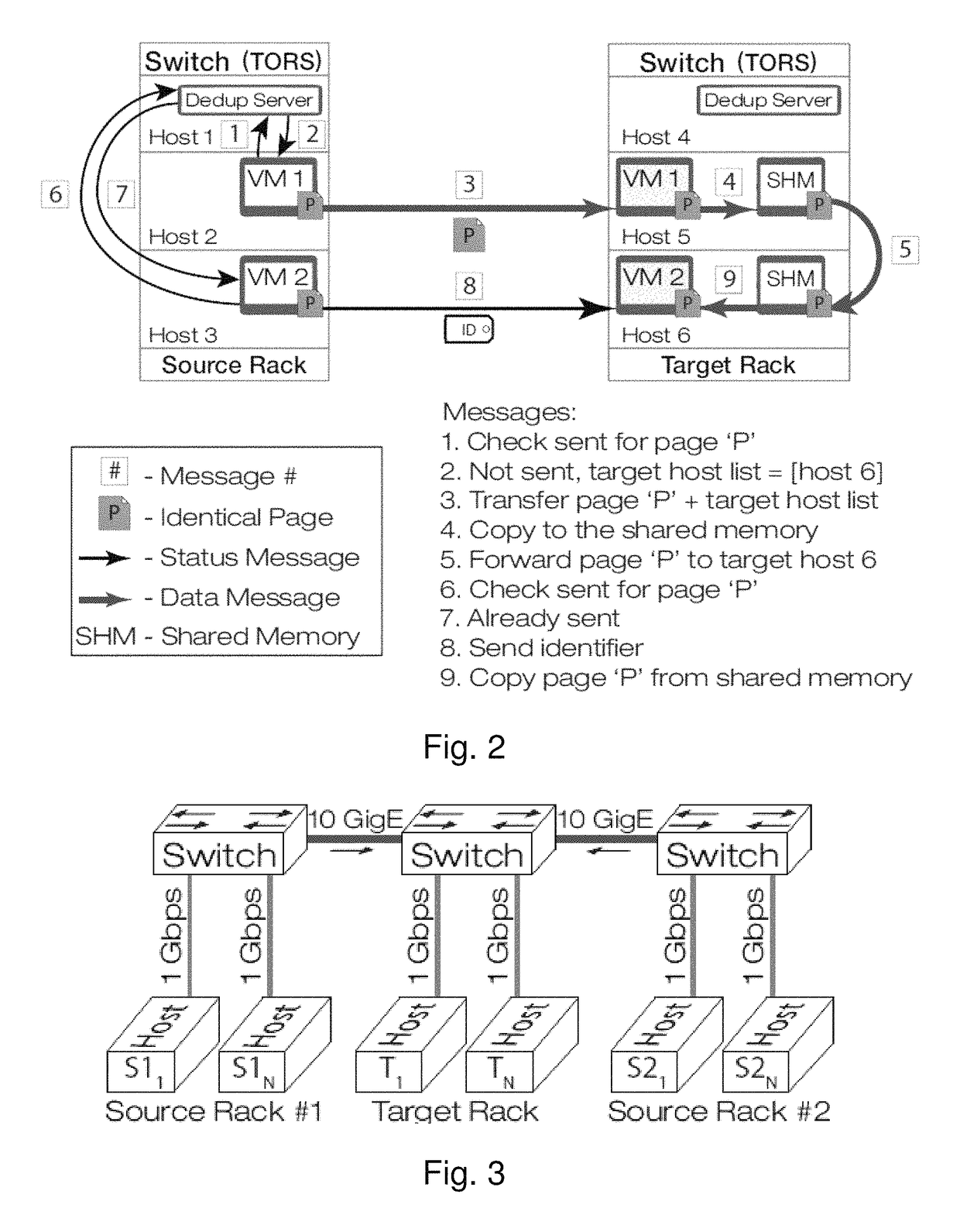Gang migration of virtual machines using cluster-wide deduplication
a virtual machine and cluster-wide deduplication technology, applied in the field of gang migration, can solve the problems of unresolved problems such as the inability to thoroughly investigate the simultaneous migration of multiple vms, the adverse performance impact of vm migration on application performance, and the inability to fully investigate the effect of gang migration
- Summary
- Abstract
- Description
- Claims
- Application Information
AI Technical Summary
Benefits of technology
Problems solved by technology
Method used
Image
Examples
Embodiment Construction
[0064]Architecture of GMGD
[0065]VMs are live migrated from one rack of machines to another rack using GMGD. For each VM being migrated, the target physical machine is provided as an input to GMGD. Target mapping of VMs could be provided by another VM placement algorithm that maximizes some optimization criteria such as reducing inter-VM communication overhead [27] or maximizing the memory sharing potential [29]. GMGD does not address the VM placement problem nor does it assume the lack or presence of any inter-VM dependencies.
[0066]As shown in FIG. 1, a typical cluster consists of multiple racks of physical machines. Machines within a rack are connected to a top-of-the-rack (TOR) switch. TOR switches are connected to one or more core switches using high-bandwidth links (typically 10 Gbps or higher). GMGD does not preclude the use of other layouts where the core network could become overloaded.
[0067]Migrating VMs from one rack to another increases the network traffic overhead on the ...
PUM
 Login to View More
Login to View More Abstract
Description
Claims
Application Information
 Login to View More
Login to View More - R&D
- Intellectual Property
- Life Sciences
- Materials
- Tech Scout
- Unparalleled Data Quality
- Higher Quality Content
- 60% Fewer Hallucinations
Browse by: Latest US Patents, China's latest patents, Technical Efficacy Thesaurus, Application Domain, Technology Topic, Popular Technical Reports.
© 2025 PatSnap. All rights reserved.Legal|Privacy policy|Modern Slavery Act Transparency Statement|Sitemap|About US| Contact US: help@patsnap.com



